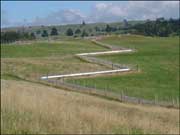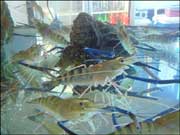2. History of the Wairakei Borefield
Before
the 1950's the Wairakei Geothermal Field had about 20 geysers, springs,
mud pools and fumaroles which produced about 30 000 tonnes of hot water
each day. This water flowed into the Waikato River. Since 1950 considerable
development has occurred.
In the 1950's the NZ Government started development in the Wairakei area by drilling 20 wells to investigate the production of steam for electricity generation
The reasons for the development of the Wairakei geothermal field were
- two successive dry years resulting in poor hydro electric generation and nation wide power shortages
- the limited hydro generation potential in the North Island, given the expected population growth.
- coal fired thermal stations could supply the electricity but government wanted to vary the generation sources - partly due to militant unions at the time.
- the supply of hot water and steam for geothermal power is not affected by rainfall
- the 'unused' area of land was already Government owned
- the land was flat and accessible
- the Waikato River was nearby and large volumes of cold water were available for the important step of cooling the steam in condensers.
Wairakei was the second geothermal power plant in the world when power generation commenced on 15 Nov 1958.
Development of the field continued until the installation of the last turbine in 1963.
By the 1980's the extraction of steam and hot water had resulted in the following measurable changes in the geothermal system
- production had caused the geothermal systems pressure to drop markedly
- this pressure drop allowed cool water to enter the underground resource, which in turn lowered its temperature from about 250 degrees C to 200 - 230degrees C in some parts of the field. This was of concern because it is the temperature that determines the amount of steam available to drive the turbines.



